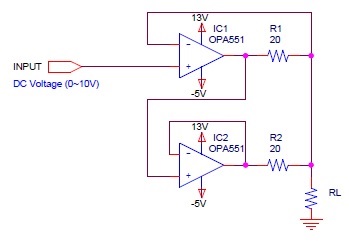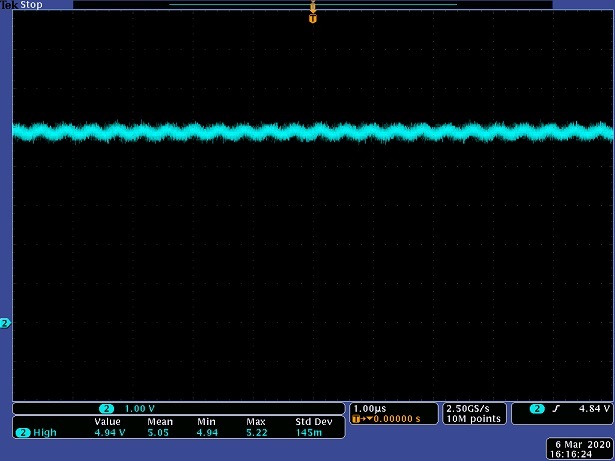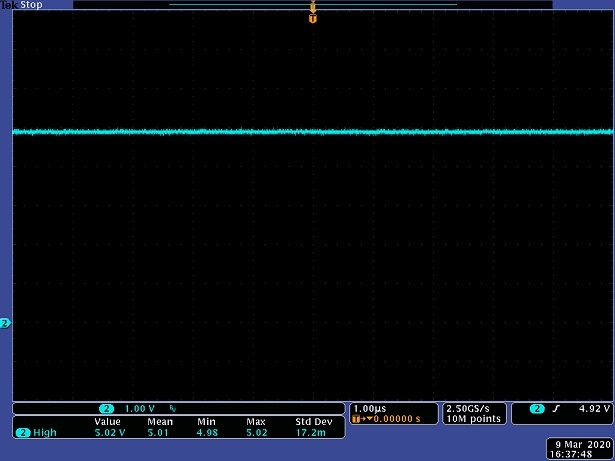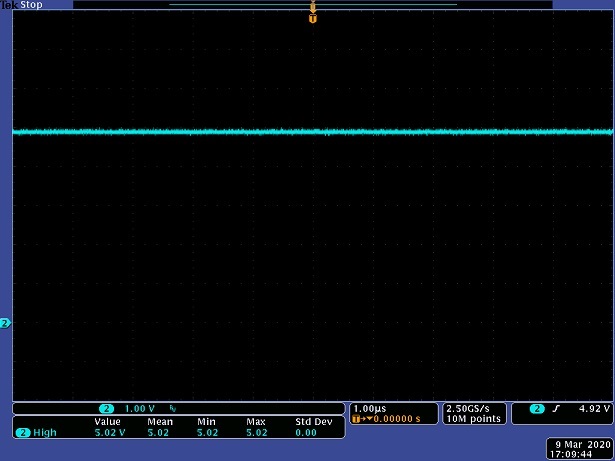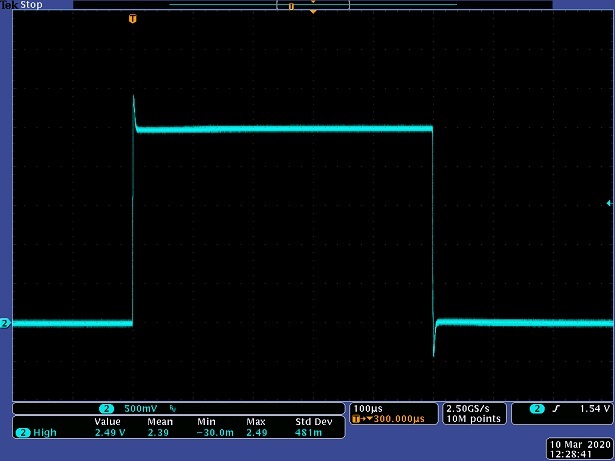Hi team,
I am trying to use OPA551 with a voltage follower (gain = 1). I am trying to increase the output current by using a circuit configuration that uses two operational amplifiers described in Fig. 29 on page 14 of the data sheet. However, if I check it with an experimental circuit, the output will appear to oscillate. Do I need any additional components for use with voltage followers? In the experimental circuit, there is no R1, R2 = 0ohm, RS = 20ohm. No output load (RL) is connected.
Best Regards,
Tom Liu



